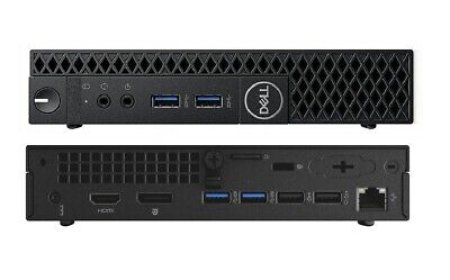Driving Financial Success with Corporate Financial Insights
Learn how Company Financials and MCA Master Data help financial analysts evaluate companies like ICICI Bank, HDFC Bank, SBI, and PNB for success.

Financial analysts depend on precise, reliable, and comprehensive data to evaluate corporate performance, forecast growth, and make informed investment recommendations. The Ministry of Corporate Affairs (MCA) in India provides a wealth of data through platforms like MCA Master Data, including Company Financials, CIN Numbers, Directors DIN Numbers, and Compliance Data. These resources offer critical insights into the financial health, leadership stability, and regulatory adherence of companies such as ICICI Bank, HDFC Bank, State Bank of India (SBI), and Punjab National Bank (PNB). This guide explores how analysts can leverage MCA data to drive financial success, offering practical applications, best practices, and actionable strategies for robust financial analysis.
The Role of MCA Financial Data
MCA Master Data serves as a cornerstone for financial analysts, providing a centralized repository of critical information about Indian companies. This includes Company Financials, Corporate Identification Numbers (CIN), Directors Identification Numbers (DIN), and Compliance Data. By accessing this data, analysts can evaluate the performance, governance, and regulatory compliance of major banks like ICICI Bank (CIN: L65190GJ1994PLC021012), HDFC Bank (CIN: L65920MH1994PLC080618), State Bank of India General Insurance (CIN: U66000MH2009PLC190546), and Punjab National Bank (CIN: L65929DL1947PLC001240).
Key Components of MCA Data
-
Company Financials: These include balance sheets, profit and loss statements, and cash flow statements, offering a detailed view of a companys financial performance. For instance, analysts can examine SBIs revenue trends or PNBs debt levels to assess financial stability.
-
CIN Number: The Corporate Identification Number is a unique identifier for each company, enabling analysts to access specific financial and compliance records. For example, HDFC Banks CIN (L65920MH1994PLC080618) unlocks detailed financial reports.
-
Directors DIN No.: The Director Identification Number tracks the leadership history and involvement of directors across companies. For instance, knowing the DIN of ICICI Banks leadership provides insights into governance stability.
-
Compliance Data: This ensures companies adhere to regulatory requirements, such as timely filing of annual returns. Compliance data for PNB, for example, confirms its adherence to MCA regulations, reducing investment risks.
By leveraging these components, analysts can build a comprehensive understanding of a companys operations, leadership, and market positioning.
Benefits for Financial Analysts
MCA data offers a range of benefits for financial analysts, enabling them to make data-driven decisions. Below are the key advantages, illustrated with examples from ICICI Bank, HDFC Bank, SBI, and PNB.
1. Performance Evaluation
Company Financials provide quantitative metrics to assess a companys operational success. For instance, HDFC Bank reported a consolidated revenue of approximately $15 billion in its latest financial year, reflecting strong growth in retail and corporate banking. Similarly, ICICI Banks financials show consistent profitability, with a net profit of over $4 billion, driven by its diversified portfolio. SBI, as Indias largest public sector bank, reported a revenue of $40 billion, showcasing its dominance in the banking sector. PNB, while smaller, reported a revenue of $10 billion, indicating steady performance despite past challenges. These figures, accessible via MCA Master Data, allow analysts to benchmark performance against competitors.
2. Risk Assessment
The DIN of directors provides insights into leadership stability and governance quality. For example, Sashidhar Jagdishan (DIN: 08614396), CEO of HDFC Bank, has a track record of driving growth, reducing investment risks. Similarly, Neelam Dhawan (DIN: 00871445), former CEO of ICICI Bank, was a prominent figure whose tenure analysts can study for governance insights. For SBI, the DIN of its chairman, Ashima Goyal (DIN: 00233635), reflects stable leadership, while PNBs leadership transitions, such as those under Atul Kumar Goel (DIN: 07266897), highlight efforts to rebuild trust after financial challenges. By analyzing DIN data, analysts can assess leadership-related risks.
3. Compliance Insights
Compliance Data from MCA Master Data verifies whether companies adhere to regulatory standards. For instance, ICICI Banks consistent filing of annual returns and compliance with RBI regulations signals low regulatory risk. Similarly, SBIs adherence to MCA and SEBI guidelines ensures transparency, while PNBs compliance record reflects its recovery from past non-performing asset (NPA) issues. HDFC Banks clean compliance history further strengthens its appeal to investors. These insights help analysts gauge the regulatory stability of each bank.
4. Market Forecasting
Indian Company Data from MCA Master Data enables analysts to track industry trends. For example, the banking sectors growth, driven by digital banking and financial inclusion, is evident in the performance of ICICI Bank and HDFC Bank. SBIs extensive branch network and government backing make it a bellwether for public sector banking trends, while PNBs focus on retail banking signals a shift toward customer-centric strategies. By combining MCA data with market trends, analysts can forecast growth and identify investment opportunities.
How to Access MCA Data
Accessing MCA data is straightforward, with platforms like MCA Master Data and stock exchange websites providing user-friendly interfaces. Below is a step-by-step guide to retrieving data for ICICI Bank, HDFC Bank, SBI, and PNB.
-
Visit Platforms: Navigate to MCA Master Data (mca.gov.in) or stock exchange websites like BSE (bseindia.com) or NSE (nseindia.com). These platforms host financial and compliance records for listed companies.
-
Search CIN: Use the CIN to access financial reports. For example:
-
ICICI Bank: L65190GJ1994PLC021012
-
HDFC Bank: L65920MH1994PLC080618
-
PNB: L65929DL1947PLC001240
-
-
Check Directors: Search for directors DIN numbers on MCAs Director Master Data page. For instance, verify Sashidhar Jagdishan (HDFC Bank), Neelam Dhawan (ICICI Bank, historical), Ashima Goyal (SBI), or Atul Kumar Goel (PNB) to assess leadership stability.
-
Study Compliance: Review Compliance Data on MCA Master Data to confirm regulatory adherence, such as timely filings and adherence to RBI guidelines.
These steps ensure analysts can efficiently access and analyze data for informed decision-making.
Practical Applications
MCA data has practical applications across various financial analysis scenarios. Below are examples of how analysts can use this data for ICICI Bank, HDFC Bank, SBI, and PNB.
Case Study: Evaluating Growth Potential
An analyst assessing HDFC Banks growth potential uses Company Financials from MCA Master Data to analyze its $15 billion revenue and 15% year-on-year growth. By comparing this with ICICI Banks $4 billion net profit and SBIs $40 billion revenue, the analyst identifies HDFC Bank as a leader in private banking. PNBs $10 billion revenue, while lower, shows recovery from past NPA challenges, making it a potential turnaround story. These insights guide investment recommendations.
Case Study: Assessing Regulatory Stability
Compliance Data is critical for evaluating regulatory risks. For instance, an analyst reviewing ICICI Banks MCA filings confirms its adherence to RBI and SEBI regulations, reducing investment risks. Similarly, SBIs consistent compliance reflects its stability as a public sector bank, while PNBs improved compliance post-2018 fraud scandals signals a commitment to governance. HDFC Banks clean compliance record further strengthens its investment case.
Case Study: Leadership Analysis
Using DIN data, analysts can evaluate leadership stability. For example, Sashidhar Jagdishans leadership at HDFC Bank has driven digital transformation, while Ashima Goyal tenure at SBI emphasizes financial inclusion. PNBs Atul Kumar Goel has focused on restructuring, and ICICI Banks historical data on Neelam Dhawan provides lessons on governance risks. These insights help analysts assess the impact of leadership on financial performance.
Best Practices for Leveraging MCA Data
To maximize the value of MCA data, analysts should adopt the following best practices:
-
Regular Monitoring: Track Company Financials for real-time updates. For instance, quarterly reports for SBI and PNB provide insights into public sector banking trends, while HDFC and ICICI Banks reports reflect private sector dynamics.
-
Use Metrics: Focus on key financial metrics like revenue, debt-to-equity ratio, and net profit margins. For example, HDFC Banks low debt-to-equity ratio signals financial strength, while PNBs higher ratio warrants caution.
-
Cross-Verify: Combine MCA data with market trends from BSE, NSE, or RBI reports. For instance, ICICI Banks financials align with Indias growing digital banking sector, while SBIs data reflects government-backed initiatives.
-
Document Analysis: Record insights from CIN and DIN searches to build a comprehensive database. For example, maintaining a log of SBIs CIN-based financials and PNBs DIN-based leadership changes streamlines future analysis.
-
Leverage Technology: Use data analytics tools to process large datasets from MCA Master Data. For instance, Python or Excel can help analysts visualize SBIs revenue trends or PNBs NPA recovery.
Challenges and Considerations
While MCA data is invaluable, analysts should be aware of potential challenges:
-
Data Timeliness: MCA filings may lag behind real-time market data. Cross-referencing with BSE or NSE reports ensures accuracy.
-
Data Complexity: Financial reports for banks like SBI and PNB can be complex due to their size and public sector obligations. Analysts should focus on key metrics to simplify analysis.
-
Regulatory Changes: RBI and SEBI regulations evolve, impacting compliance data. Staying updated on regulatory changes is critical.
By addressing these challenges, analysts can ensure robust and accurate analysis.
Conclusion
MCA Master Data, including Company Financials, CIN Numbers, Directors DIN Numbers, and Compliance Data, is a powerful tool for financial analysts. By analyzing data for leading banks like ICICI Bank, HDFC Bank, State Bank of India, and Punjab National Bank, analysts can evaluate performance, assess risks, and forecast market trends. Platforms like MCA Master Data, BSE, and NSE provide easy access to this data, enabling data-driven investment decisions. By following best practices and addressing challenges, analysts can leverage MCA data to drive financial success and deliver actionable insights for stakeholders.























